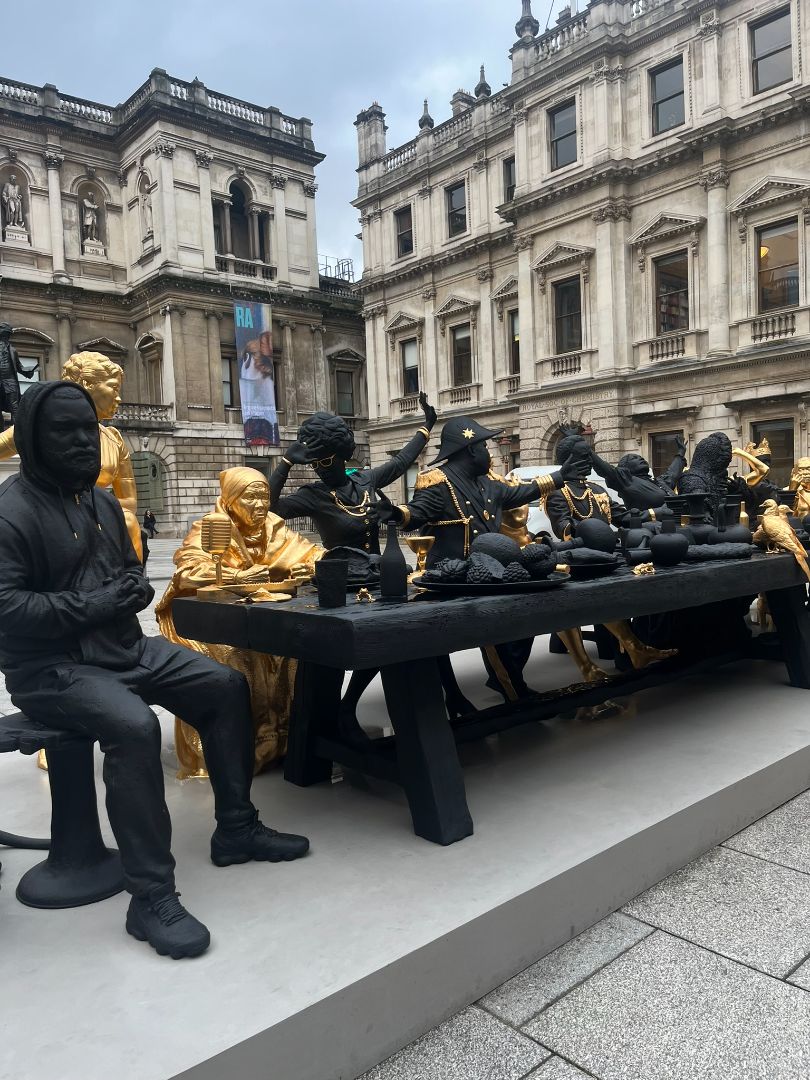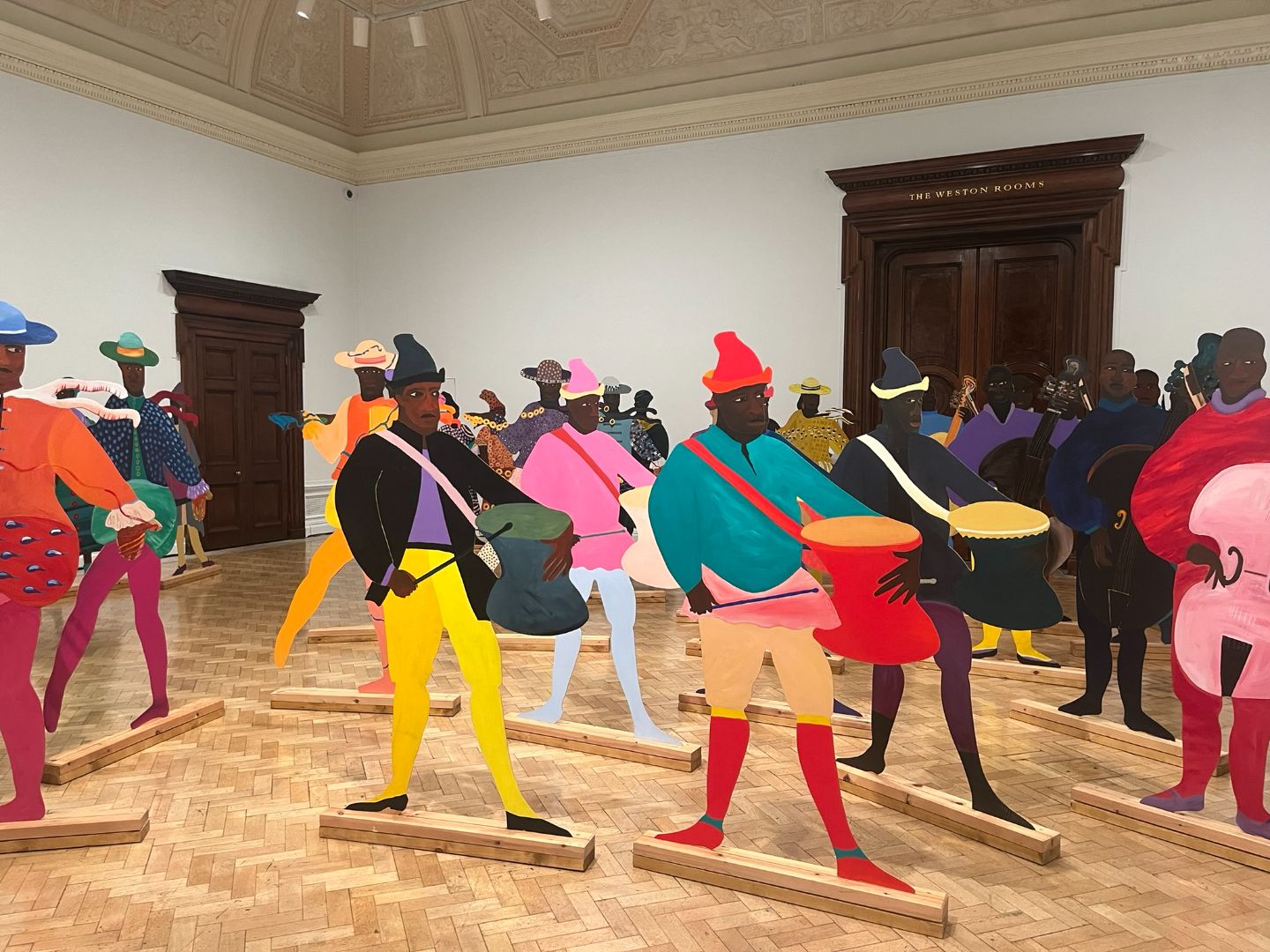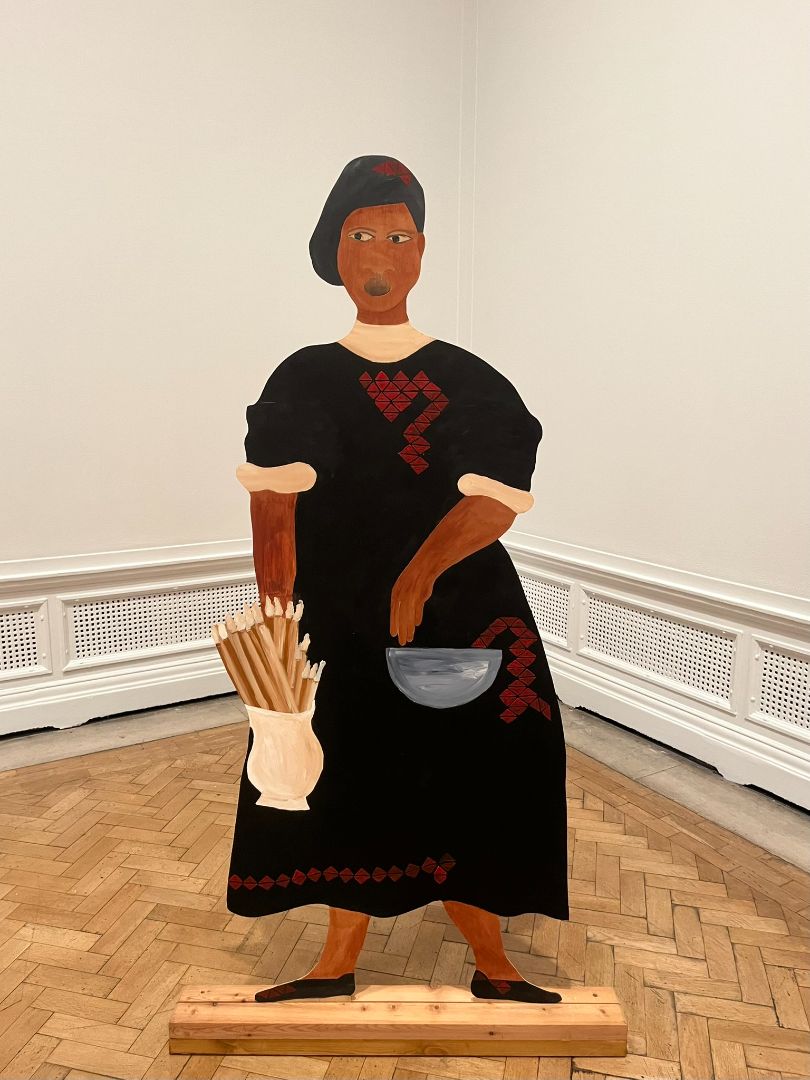Published: 10/02/2024

Before going into the Royal Academy, you are met by a massive sculpture in the Courtyard. This is the First Supper by Tavares Strachan and is shown in the photo with this article. Strachan sees this as a meditation on humanity's struggle for progress. At the table are a range of historical figures including Mary Seacole, Harriet Tubman and Haile Selassie with produce from Africa in front of them.

One of the striking exhibits is a display of life size cut out figures by Lubaina Himid. These depict a range of African slaves put to work in Royal Courts in the eighteenth century, each with a brief story on the reverse.
The stories bring out each individual's African name and trade and the new names and jobs imposed on them in Europe.

"My name is Kwaboaso
They call me Polly
I painted patterns on my house
Now I keep their woodwork nice
But I have the shadows."
The installation, Naming the Money, comes near the end of the exhibition and is a dramatic part of it. It can be seen in the photos here.
The exhibition is nuanced and subtle and contains much work of great quality and impact. In the words of Lubaina Himid, "It will seem like a journey through time... a kind of pageant of great paintings, difficult paintings, great installations, but it will be like walking through a great city."




